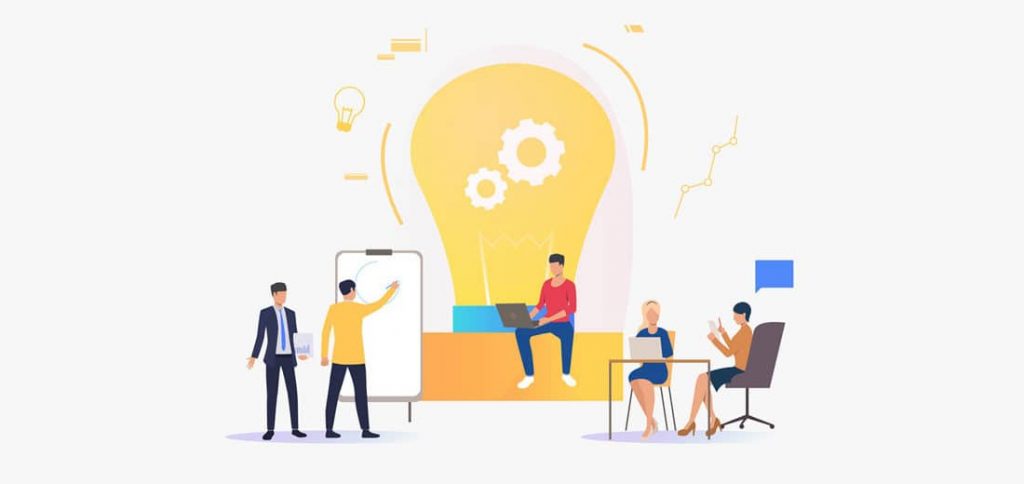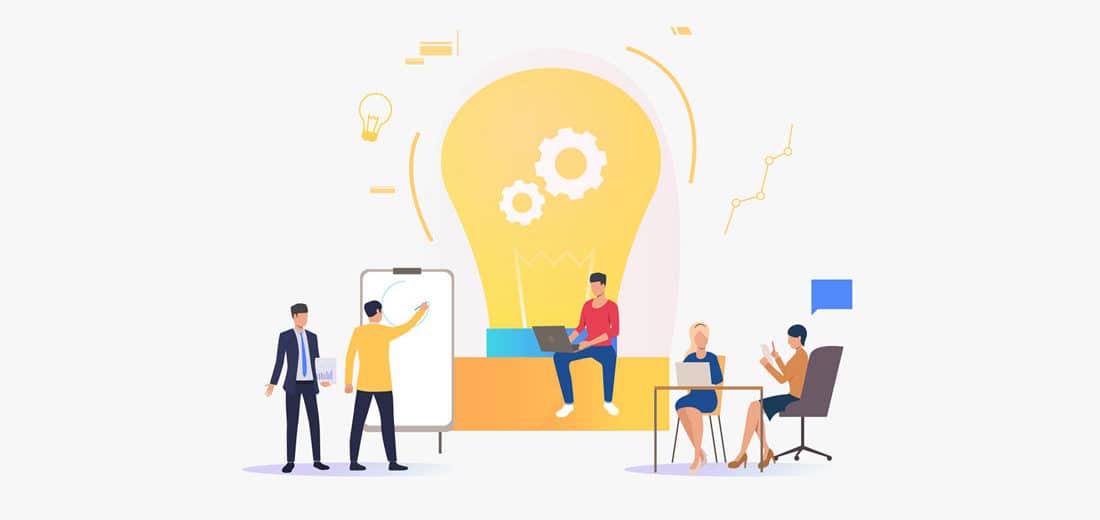Building a Culture of Continuous Learning: Strategies for Long-term Success
Cultivating a Culture of Continuous Learning: Strategies for Success
In today’s fast-paced corporate world, building a culture of continuous learning is essential for the long-term success of organizations. Learning and Development (L&D) professionals play a crucial role in shaping this culture by implementing effective strategies that foster continuous improvement and create a vibrant learning environment. In this article, we will explore key strategies to cultivate a culture of continuous learning, enabling L&D professionals to drive organizational growth and success.
To learn more about the latest trends in learning & development strategy, make sure to download a free copy of our eBook on modern L&D strategy by Nick van Dam.
The Significance of Continuous Learning: Driving L&D Success
Continuous learning is more than just acquiring new skills; it’s a mindset that embraces growth and adaptation. Organizations that prioritize continuous learning strategies position themselves at the forefront of innovation, allowing their workforce to remain agile and adaptable to change. By fostering engagement and continuous improvement, companies can proactively respond to industry shifts, drive employee engagement, and boost overall performance.
Continuous Learning: Unleashing Organizational Potential
To understand the importance of continuous learning, consider its impact on organizational success. When employees embrace a continuous learning mindset, they become more adept at handling new challenges, staying updated with industry trends, and expanding their skill sets. Continuous learning encourages employees to seek out learning opportunities, both formal and informal, to enhance their capabilities and contribute to the organization’s goals.
Building a Learning Culture in Organizations
To create a culture of continuous learning, organizations must embed learning into their DNA. This involves promoting the value of learning at all levels, from leadership to individual contributors. Leaders should actively support and participate in learning initiatives, setting an example for others. Encourage open communication, knowledge sharing, and collaboration, providing employees with opportunities to learn from one another.
Fostering Knowledge Exchange: Empowering a Learning Culture
Create platforms for employees to share their expertise, insights, and best practices. This can include establishing communities of practice, organizing lunch-and-learn sessions, or implementing digital platforms for knowledge exchange. By fostering a learning culture, organizations empower employees to continuously seek knowledge, collaborate, and contribute to the collective growth of the organization.
Aligning Learning Goals for Organizational Success
Continuous learning should align with the broader objectives of the organization. L&D professionals must ensure that learning initiatives directly contribute to the company’s success. This alignment requires a deep understanding of the organization’s strategic vision, goals, and challenges.
Communicate the connection between individual and organizational goals to inspire employees. Help them see how their continuous development supports the organization’s mission. By providing a clear link between learning and organizational outcomes, employees are more motivated to engage in continuous learning and apply their new knowledge and skills to drive results.
Empowering Self-Directed Learning
Facilitate self-directed learning by empowering employees to take ownership of their development. Provide a variety of learning resources, such as online courses, webinars, and communities of practice, allowing individuals to choose the learning methods that best suit their needs.
Encourage self-reflection and goal setting by assisting employees in identifying areas for improvement and defining their own learning objectives. By giving employees autonomy and control over their learning journey, organizations foster a culture of continuous improvement and personal growth.
Additionally, offer stretch assignments or projects that challenge employees to step outside their comfort zones and develop new skills. These opportunities not only foster continuous learning but also promote resilience, adaptability, and innovation.
Implementing Effective Strategies for Continuous Learning
Embrace technology-driven learning platforms to enhance the accessibility and scalability of continuous learning initiatives. Learning Management Systems (LMS) or Learning Experience Platforms (LXP) can deliver personalized learning experiences, track progress, and provide targeted recommendations based on employees’ individual needs and preferences.
Leverage e-learning modules, gamification, and microlearning to make learning engaging and easily accessible. These approaches allow employees to learn at their own pace and in bite-sized chunks, fitting learning into their busy schedules. Virtual classrooms and webinars can also facilitate interactive learning experiences, enabling employees to collaborate and learn from experts regardless of their physical location.
For more information on training strategies for your employees download our free eBook “Modern Training & Development Strategies”
Fostering Collaboration and Peer Learning for Growth
Promote collaborative learning opportunities to foster knowledge sharing and peer-to-peer support. Implement social learning platforms, virtual communities, or mentorship programs that facilitate information exchange and skill development.
Encourage employees to actively participate in discussions, share their expertise, and learn from their peers. By creating a supportive environment that encourages collaboration, organizations tap into the collective intelligence of their workforce, enhancing the overall learning experience and fostering a sense of community.
Measuring Learning Impact for Continuous Improvement
Establish metrics and analytics to measure the impact of learning initiatives and drive continuous improvement. Monitor key performance indicators (KPIs) such as learner engagement, knowledge retention, and application of skills in the workplace.
Regularly assess the effectiveness of learning programs through feedback surveys, assessments, and performance evaluations. Analyze data to identify areas for enhancement and refine learning strategies, accordingly, ensuring continuous growth and effectiveness. This data-driven approach enables L&D professionals to make informed decisions, allocate resources efficiently, and continuously enhance the impact of learning initiatives.
Building a Sustainable Culture of Continuous Learning
In today’s rapidly evolving business landscape, organizations must prioritize continuous learning to stay competitive. By cultivating a culture of continuous improvement, aligning learning goals with organizational objectives, and implementing effective strategies, L&D professionals can empower employees to embrace lifelong learning and drive long-term success.
To learn more about how to optimize digital learning, make sure to listen to our free podcast.
Building a culture of continuous learning requires the commitment and active participation of leaders, who must set the example by valuing and prioritizing learning. By fostering a learning culture where knowledge sharing, collaboration, and experimentation are encouraged, organizations create an environment where employees can thrive, adapt to change, and contribute to innovation.
Elevating Learning Culture: Technology, Collaboration, and Measuring Impact
Through the use of technology and learning platforms, organizations can make learning accessible, personalized, and engaging, catering to the diverse needs and preferences of employees. By leveraging collaborative learning opportunities, organizations tap into the collective wisdom of their workforce, fostering a culture of peer-to-peer support and continuous growth.
Measuring the impact of learning initiatives allows organizations to identify areas for improvement and refine strategies, ensuring that learning efforts align with organizational goals and drive tangible results.
By embracing a culture of continuous learning, organizations future-proof their workforce, enhance employee engagement, and create a dynamic and innovative environment. L&D professionals play a vital role in championing and implementing these strategies, enabling organizations to adapt, thrive, and succeed in an ever-changing business landscape.
More information about how to develop a high performing learning content strategy for your company check out this blog article: Optimizing Your LMS with a Learning Content Strategy

Download free L&D content

Free eBook: Blended Learning
Blended Learning. Solved in one solution. Get the right blend of modern and traditional learning. Why Blended Learning is important? What works for one employee
Modern L&D Strategy by Nick van Dam
Download a free copy of our best-selling eBook with the newest trends in Learning & Development strategy by the former Global Chief Learning Officer at McKinsey & Co.

Free Learning & Development content

Optimizing L&D for Hybrid Workforces: Best Practices and Success Stories
In the contemporary corporate world, the emergence of hybrid workforces has heralded a significant paradigm shift in how organizations operate. For Learning and Development (L&D), this shift brings about unique challenges and opportunities. This article is your guide to navigating the complexities of hybrid workforces, offering comprehensive insights, practical tips, and inspiring success stories.

10 Strategies for Improving Learning Engagement and Motivating Learners
How can you keep your learners engaged and motivated? Whether you’re working in corporate training or as an educator, it’s important to have effective learning engagement strategies in place. By utilizing the right tools and techniques, you can enhance the learning experience and make your training more successful.

How to maximize employee engagement in L&D while minimizing costs
mployee engagement in learning and development (L&D) programs is crucial for the success of any organization. Engaged employees are more productive, more motivated, and more likely to stay with the company. However, with tight budgets and limited resources, it can be challenging for organizations to create L&D programs that engage employees while minimizing costs. In this article, we explore strategies for maximizing employee engagement in L&D programs while minimizing costs.


